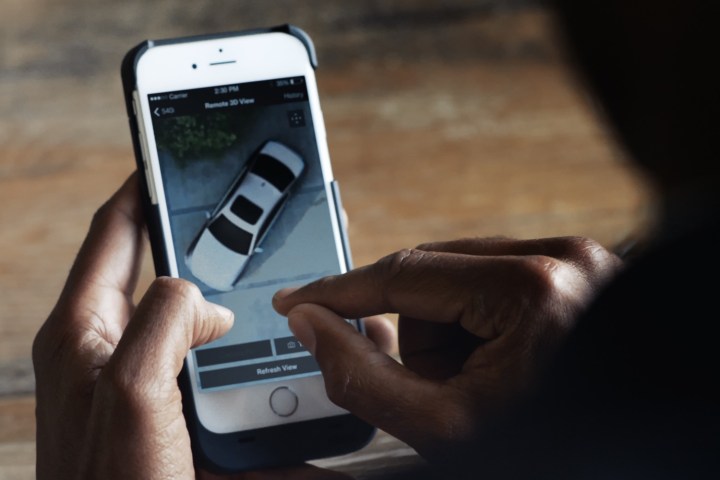
Instead of relating details about the car itself, BMW is dropping hints about related technologies, like the Remote 3D View system that will be available on the new 5 Series when it launches next year. Remote 3D View allows drivers to get a 360-degree 3D view of a car on their smartphones. That’s about all BMW has to say about it for now, though.
The system appears to work like the existing in-car Surround View setup, which gives the driver a 360-degree bird’s eye view of the car on the dashboard screen during low-speed maneuvers. Several carmakers offer similar systems, but BMW may be the first to try to export the feature to smartphones. But how will BMW drivers use that ability?
Read more: Citroën CXPerience concept coming to Paris Motor Show
While BMW hasn’t confirmed anything, it would make sense for Remote 3D View to be paired with remote parking, which is already offered on the larger BMW 7 Series in Europe. Remote-parking systems allow the driver to get out of the car and let it park itself. Having a full overhead view of the car and its surroundings would make monitoring that process a bit easier.
Just as the true purpose of Remote 3D View remains a mystery, so does the next-generation 5 Series itself. Reports so far have indicated that the new model will get a plug-in hybrid variant, alongside a mix of turbocharged four-cylinder and six-cylinder gasoline and diesel engines. The M5 performance variant will return, as will the rather strange 5 Series Gran Turismo hatchback. Expect BMW to pile on technology to compete with rival Mercedes-Benz’s redesigned E-Class.
The 5 Series will be revealed at the 2016 Paris Motor Show at the end of next month, and will likely go on sale next year as a 2017 model. Check back with DT for more updates on this high-tech luxury sedan and other goings-on in Paris.


